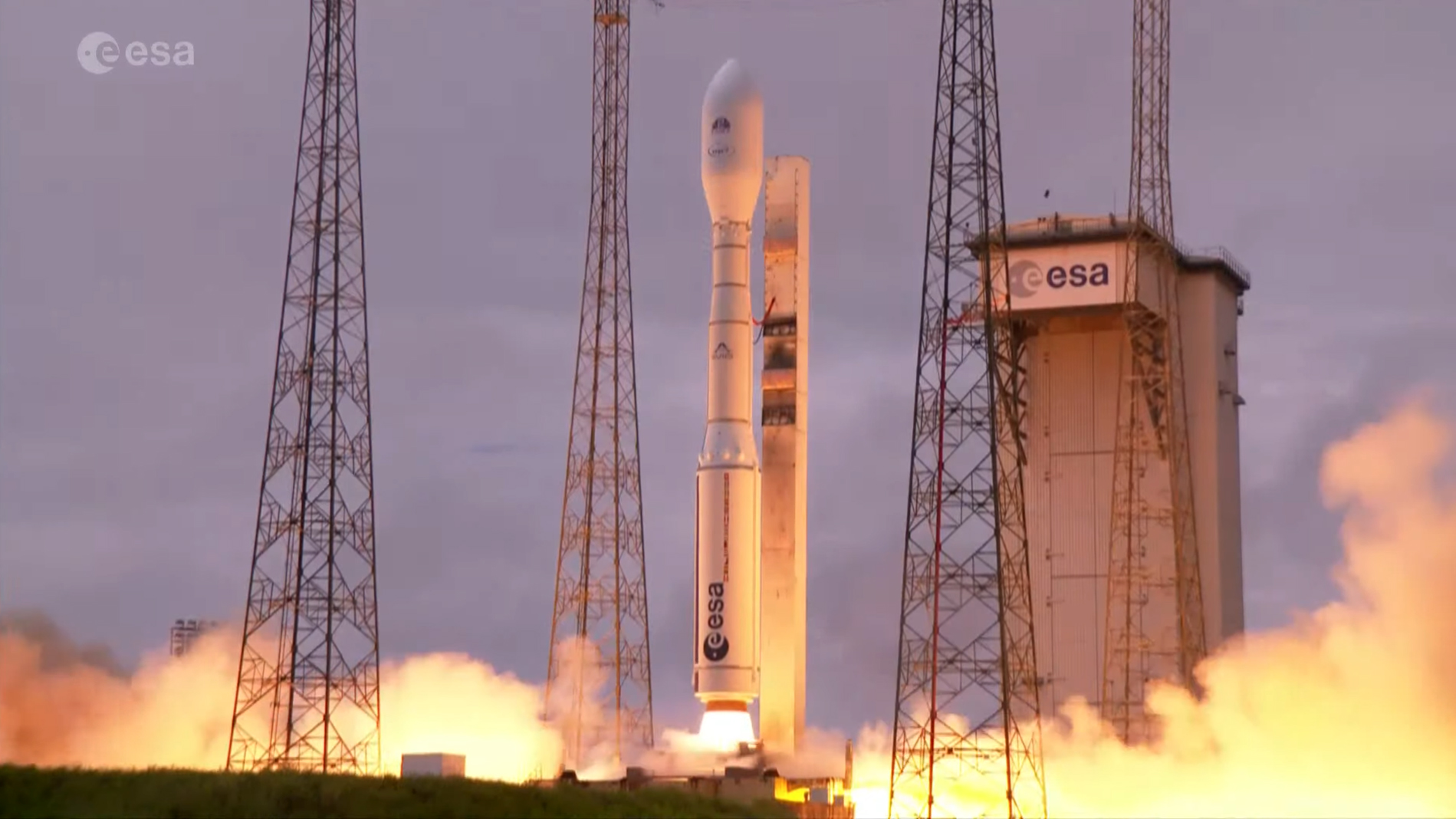Europe's Vega C rocket is scheduled to launch on its second-ever mission on Tuesday night (Dec. 20), and you can watch the action live.
The medium-lift Vega C is scheduled to lift off from Europe's Spaceport in Kourou, French Guiana on Tuesday at 9:47 p.m. EST (10:47 p.m. local time; 0247 GMT on Dec. 21). You can watch the launch live here at Space.com, courtesy of Arianespace, which operates the Vega C, or directly via the France-based company.
The 115-foot-tall (35 meters) Vega C rocket will carry to sun-synchronous orbit the satellites Pléiades Neo 5 and Pléiades Neo 6, which together weigh 4,359 pounds (1,977 kilograms).
Related: The history of rockets

The two spacecraft will complete the Pléiades Neo Earth-imaging constellation, which is owned and operated by European aerospace giant Airbus.
"The constellation is made of four identical satellites, built using the latest Airbus innovations and technological developments, and allows to image any point of the globe, several times per day, at 30-centimeter [12 inches] resolution," Arianespace wrote in a description of the coming Vega C mission.
"Highly agile and reactive, they can be tasked up to 15 minutes before acquisition and send the images back to Earth within the following hour," Arianespace added. "Smaller, lighter, more agile, accurate and reactive than the competition, they are the first of their class whose capacity will be fully commercially available."
Get the Space.com Newsletter
Breaking space news, the latest updates on rocket launches, skywatching events and more!
Tuesday's launch was originally scheduled for Nov. 24 but was delayed nearly a month to replace faulty equipment on the Vega C. This work required taking the rocket back to a processing facility at Kourou and opening its payload fairing, Arianespace representatives said via Twitter last month.
Vega C was developed by the European Space Agency (ESA) and is now operated by Arianespace. The new rocket is a more powerful variant of the original Vega, which made its debut in 2012.
Vega C's inaugural flight occurred this past July, when the rocket successfully launched a 650-pound (295 kg) Italian spacecraft and six tiny tagalong cubesats to orbit.
Arianespace currently has three operational rockets in its stable: the two Vegas and Ariane 5, a powerful heavy lifter. The company flew Russian-built Soyuz rockets for years as well but stopped doing so after Russia invaded Ukraine in February 2022.
Arianespace will also fly the Ariane 6, the successor to the Ariane 5. ESA is still developing the new heavy lifter, which is expected to launch for the first time in late 2023.
Mike Wall is the author of "Out There" (Grand Central Publishing, 2018; illustrated by Karl Tate), a book about the search for alien life. Follow him on Twitter @michaeldwall. Follow us on Twitter @Spacedotcom or on Facebook.
Join our Space Forums to keep talking space on the latest missions, night sky and more! And if you have a news tip, correction or comment, let us know at: community@space.com.

Michael Wall is a Senior Space Writer with Space.com and joined the team in 2010. He primarily covers exoplanets, spaceflight and military space, but has been known to dabble in the space art beat. His book about the search for alien life, "Out There," was published on Nov. 13, 2018. Before becoming a science writer, Michael worked as a herpetologist and wildlife biologist. He has a Ph.D. in evolutionary biology from the University of Sydney, Australia, a bachelor's degree from the University of Arizona, and a graduate certificate in science writing from the University of California, Santa Cruz. To find out what his latest project is, you can follow Michael on Twitter.









